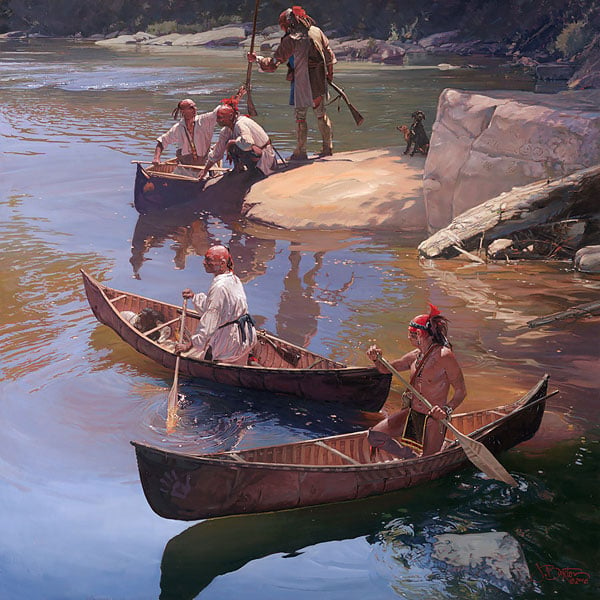The Agile Bark Canoe
The Native People of the Eastern Woodlands built two types of canoes: dug-outs, fashioned from tree trunks, and more lightweight canoes made of bark, preferably birch since it was easier to form. The men in The Agile Bark Canoe are in hunting canoes of a style attributed to the Passamaquoddy¯but perhaps these Indians traded for them, as was done frequently. They were as light as an autumn leaf upon water, with the ability to navigate rivers, shallow streams, marshes and moderate rapids. Being extremely light enabled easy portage between waterways and yet they were capable of carrying heavy loads. A canoe this size (12 feet long by 30 inches wide at its center) could be lifted with one hand and was very stable when fully loaded. The bark canoe was fast and infinitely more versatile than any small craft of the European settlers.

